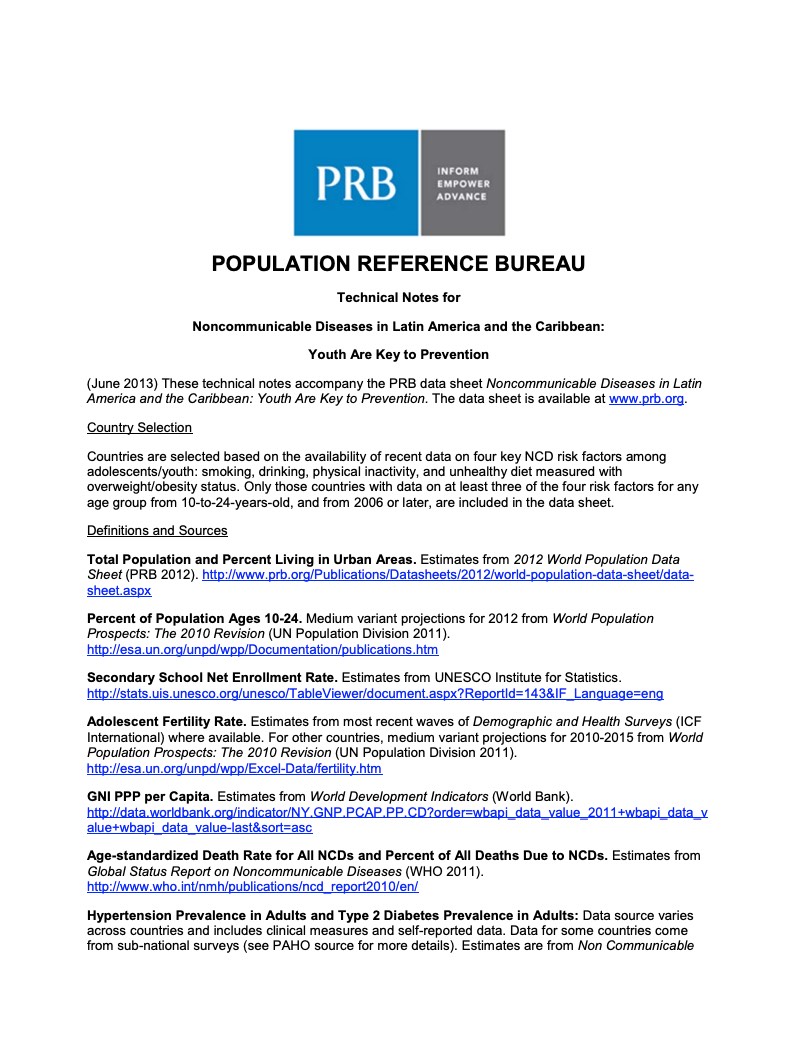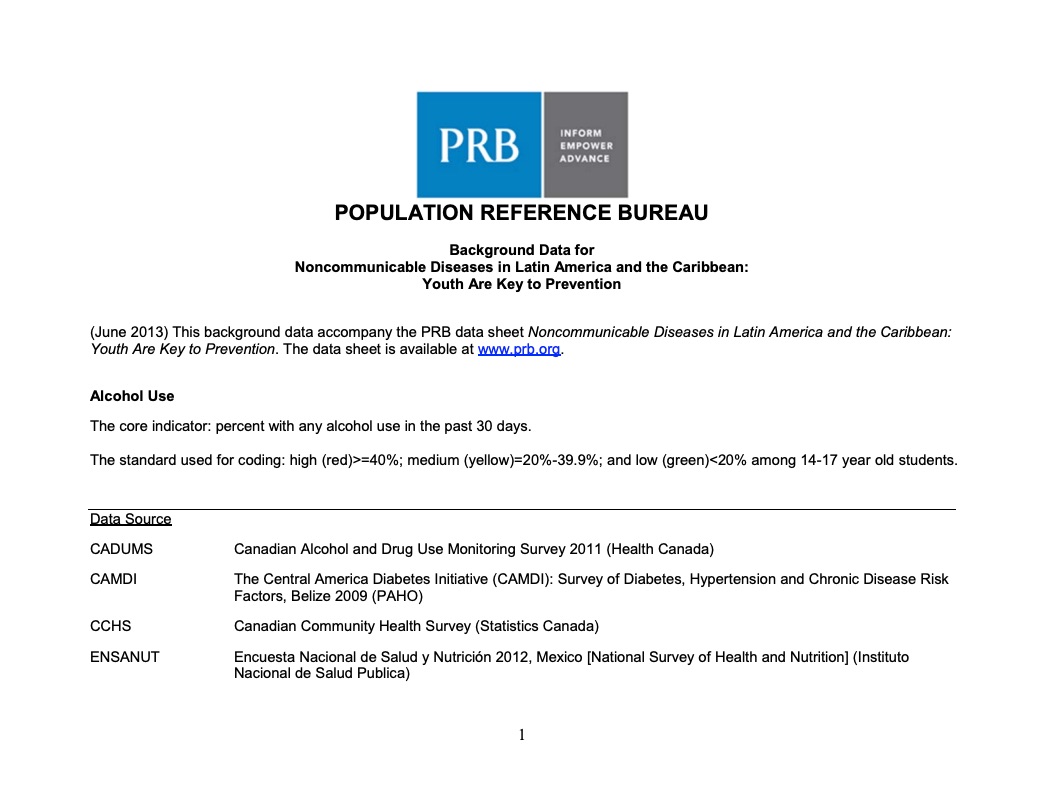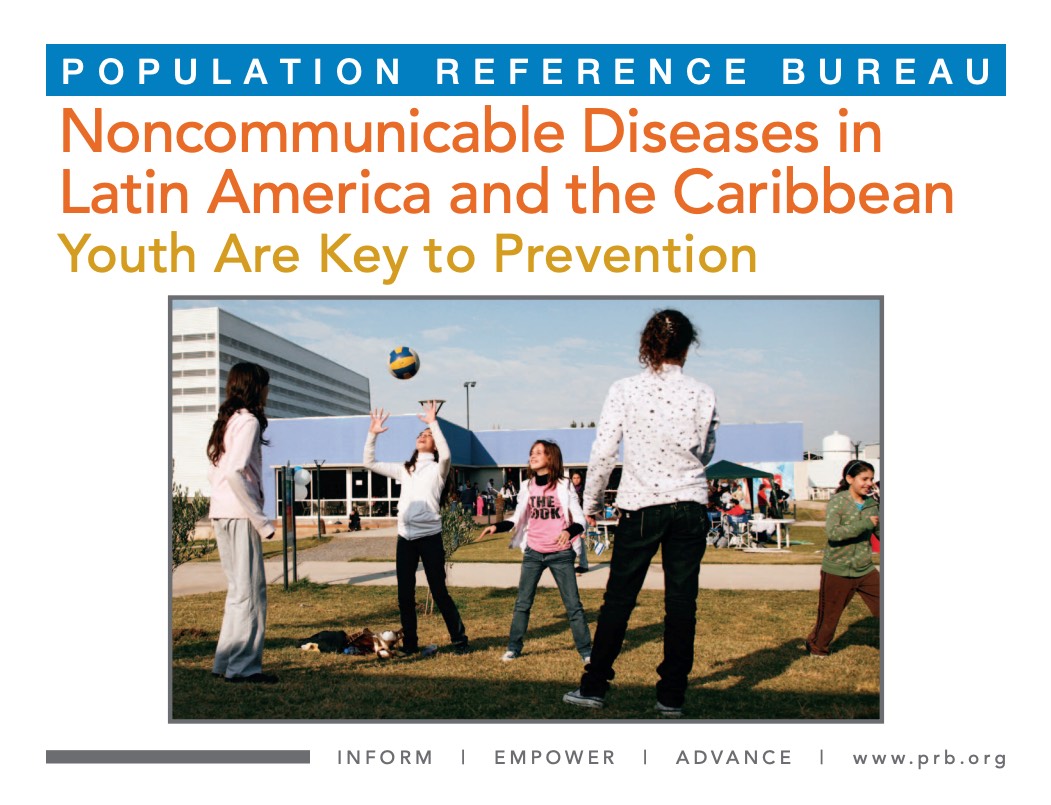17 Search Results Found For : "Uruguay"

Project: Combatting Noncommunicable Disease Risk Factors in Youth
Data Sheet Technical Notes. Noncommunicable Diseases in Latin America and the Caribbean
(2013) The four major NCDs—cardiovascular disease, most cancers, diabetes, and chronic respiratory diseases—will account for approximately 81 percent of deaths in Latin America and the Caribbean by 2030, and 89 percent of all deaths in high-income countries.

Project: Combatting Noncommunicable Disease Risk Factors in Youth
Data Sheet Background Data. Noncommunicable Diseases in Latin America and the Caribbean: Alcohol Use, Cigarette Use, Physical Inactivity, and Unhealthy Diet
(2013) The four major NCDs—cardiovascular disease, most cancers, diabetes, and chronic respiratory diseases—will account for approximately 81 percent of deaths in Latin America and the Caribbean by 2030, and 89 percent of all deaths in high-income countries.

Project: Combatting Noncommunicable Disease Risk Factors in Youth
Data Sheet. Noncommunicable Diseases in Latin America and the Caribbean: Youth Are Key to Prevention
(2013) The four major NCDs—cardiovascular disease, most cancers, diabetes, and chronic respiratory diseases—will account for approximately 81 percent of deaths in Latin America and the Caribbean by 2030, and 89 percent of all deaths in high-income countries.
Domestic Violence: An Ongoing Threat to Women in Latin America and the Caribbean
(2001) Despite laws against domestic violence, many women in Latin America and the Caribbean continue to be failed by the legal system.

Project: IDEA: Informing Decisionmakers to Act
Noncommunicable Diseases in Latin America and the Caribbean: Youth Are Key to Prevention
The four major NCDs—cardiovascular disease, most cancers, diabetes, and chronic respiratory diseases—will account for approximately 81 percent of deaths in Latin America and the Caribbean by 2030, and 89 percent of all deaths in high-income countries.
The Impact of Climate Change on Water, Sanitation, and Diarrheal Diseases in Latin America and the Caribbean
Water and sanitation play a crucial role in the transmission of diarrheal disease. These environmental factors contribute to approximately 94 percent of the 4 billion cases of diarrhea that the World Health Organization (WHO) estimates to occur globally each year.
